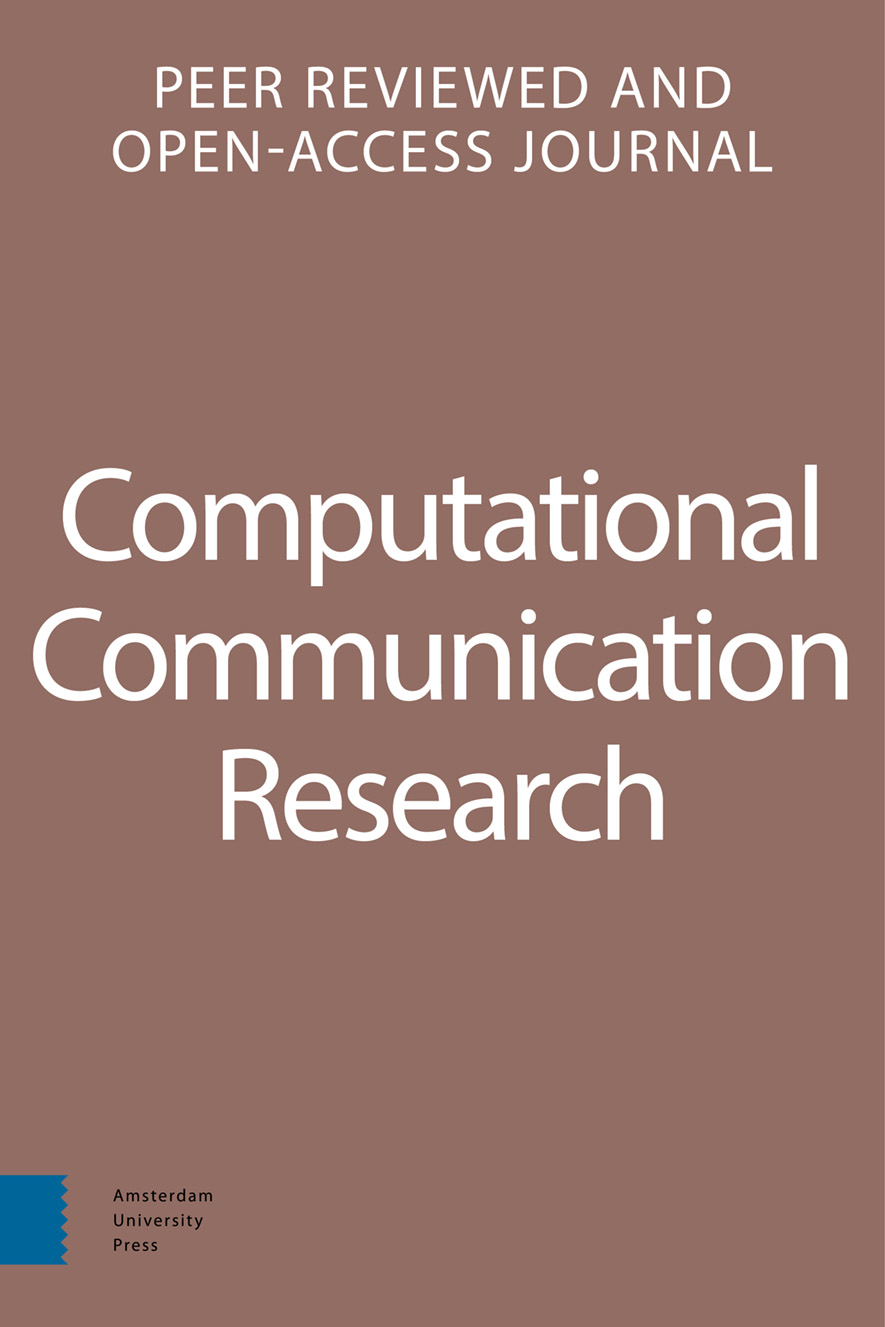- Home
- A-Z Publications
- Computational Communication Research
- Previous Issues
- Volume 2, Issue 1, 2020
Computational Communication Research - Volume 2, Issue 1, 2020
Volume 2, Issue 1, 2020
Language:
English
-
-
oa Simulating hidden dynamics
More LessAbstract Linkage analyses use data from panel surveys and content analyses to assess media effects under field conditions and are able to close the gap between experimental and survey-based media effects research. Results from current studies and simulations indicate, however, that these studies systematically under-estimate real media effects as they aggregate measurement errors and reduce the complexity of m Read More
-
-
-
oa Conversational Agent Research Toolkit
More LessBy Theo AraujoAbstract Conversational agents in the form of chatbots available in messaging platforms are gaining increasing relevance in our communication environment. Based on natural language processing and generation techniques, they are built to automatically interact with users in several contexts. We present here a tool, the Conversational Agent Research Toolkit (CART), aimed at enabling researchers to create conversati Read More
-
-
-
oa 3bij3 – Developing a framework for researching recommender systems and their effects
More LessAuthors: Felicia Loecherbach & Damian TrillingAbstract Today’s online news environment is increasingly characterized by personalized news selections, relying on algorithmic solutions for extracting relevant articles and composing an individual’s news diet. Yet, the impact of such recommendation algorithms on how we consume and perceive news is still understudied. We therefore developed one of the first software solutions to conduct studies on effects of news reco Read More
-
-
-
oa Opinion-based Homogeneity on YouTube
More LessAuthors: Daniel Röchert, German Neubaum, Björn Ross, Florian Brachten & Stefan StieglitzAbstract When addressing public concerns such as the existence of politically like-minded communication spaces in social media, analyses of complex political discourses are met with increasing methodological challenges to process communication data properly. To address the extent of political like-mindedness in online communication, we argue that it is necessary to focus not only on ideological homogeneity in online e Read More
-
-
-
oa Detecting Impoliteness and Incivility in Online Discussions
More LessAuthors: Anke Stoll, Marc Ziegele & Oliver QuiringAbstract Impoliteness and incivility in online discussions have recently been discussed as relevant issues in communication science. However, automatically detecting these concepts with computational methods is challenging. In our study, we build and compare supervised classification models to predict impoliteness and incivility in online discussions on German media outlets on Facebook. Using a sample of 10,000 hand- Read More
-
Most Read This Month
Article
content/journals/26659085
Journal
10
5
false
en

Most Cited Most Cited RSS feed
-
-
oa Computational observation
Authors: Mario Haim & Angela Nienierza
-
- More Less

